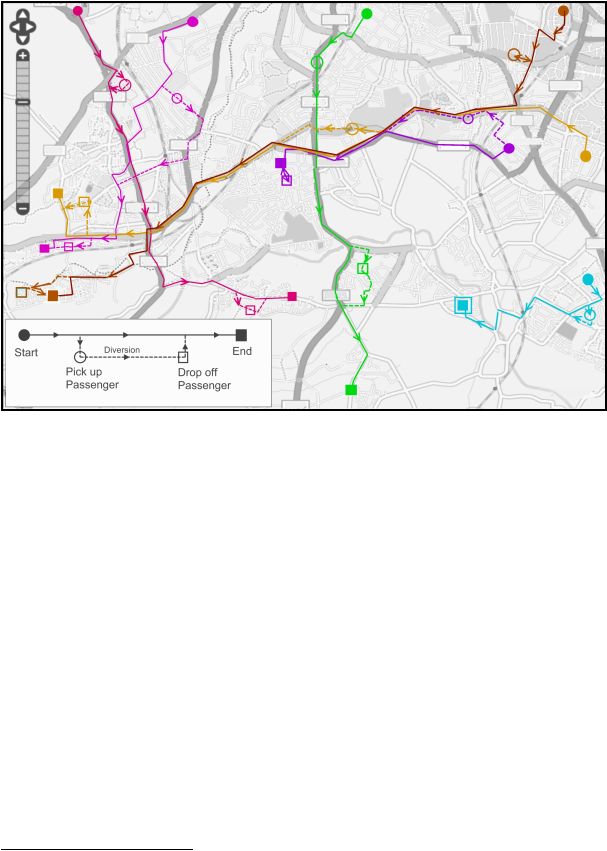
It is now a small step to arrive at an even better solution. If we are already considering using members of the
public as taxi drivers, why not include vetted volunteer drivers who are also undertaking their normal journey, to
work for example? Here the drivers are simply guided to their own destination, via small diversions if necessary,
to collect and drop off passengers on the way for a fee and the use of priority access routes. In other words this
becomes part of a flexible and co-ordinated car sharing scheme. This is called CO-ordinated ShAred Transport
or COAST.
4
This is schematically illustrated in figure 1.
Figure 1 The COAST (Co-ordinated shared transport) concept
All cars on the road are equipped with the technology to identify potential passengers travelling along similar
routes to the journey. They are subsequently collected and dropped off using minor diversions to the original
route. The cost of the trip is shared between drivers and passengers and the cars are allowed to by-pass traffic
jams using priority routes or dedicated lanes (see figure 2)
An essential component of COAST is that a logistics control centre (LCC) must co-ordinate and guide all the
vehicles. This enables passenger requests to be co-ordinated so they can be picked up and dropped off in the
most efficient manner. The inconvenience of the diversion is compensated by a payment from the passengers,
reduced road charging and/or the facility to use dedicated lanes and priority passage through traffic management
schemes which could make up for any lost time (see figure 2 for an example of a priority junction). Another
key factor to the success of such a system would be its widespread use, this would increase the chance that a
vehicle travelling in the requested direction and location is available at short notice. This level of efficiency
could never be achieved by using a fixed number of permanent taxis or several competing companies due to the
restricted number of participants in each scheme which would increase the waiting times.
The booking and operational procedures of COAST would be similar to that described for the CONNECT
study
5
. However, unlike the system described here, COAST utilises the mass use of private car journeys which
generates a service volume in proportion to demand, and allows ‘door to door’ transport with tight time margins
for minimal cost.
4
Update 7April 2010: There have been several other studies similar to COAST discussed under the label ‘Dynamic Ride Sharing’
5
CONNECT Co-ordination of CONcepts for NEw Collective Transport Technologies for FTS, Position Paper produced for Workshop on
the added value of technology for FTS (WP5) Delft, 8 July 2009

